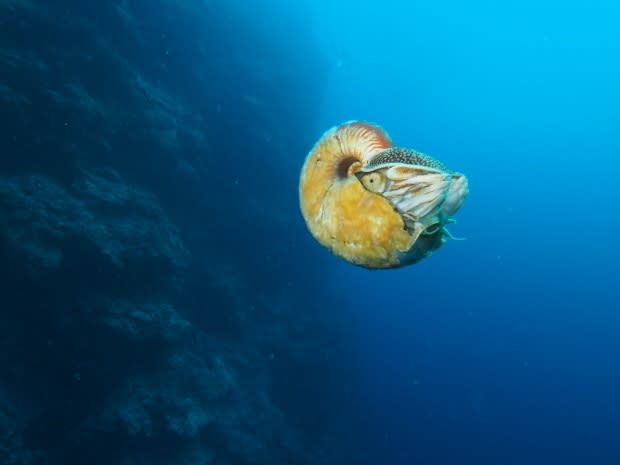A 'work of art': Amateur fossil hunter discovers stunning cephalopod in N.W.T.
Jenna Bremmer is no stranger to collecting fossils.
She often walks the banks of the Mackenzie River outside her home in Norman Wells, N.W.T., plucking fossils carried in the current.
"I don't intentionally go looking for them," said Bremmer. "They just kind of show up."
But when she came across a large, patterned rock on the banks of the Mackenzie River, she knew she had found something special.
"When I first saw it, I kind of thought it might be a carving," she said. "It's this beautiful work of art."
The fossil she found is that of an ancient "goniatite cephalopod," according to François Therrien, a paleontologist with the Royal Tyrell Museum in Drumheller, Alta.
"The specimen there is part of the ancient lineage that goes back to… before the first dinosaurs even evolved," he said.
Cephalopods are a class of animals that include today's squid and octopus. Hundreds of millions of years ago, when Bremmer's fossil was likely formed, cephalopods lived inside hard coiled shells, which they filled with gas to float up and down in the water in search of prey.

"As they aged, they just added one chamber to the shell," said Therrien, "and it formed a coiled shell."
That's the explanation behind the regular pattern of Bremmer's fossil — it's actually "a pattern that works," Therrien said.
"When I first saw it, I kind of thought it might be a carving," she said. "I'm just blown away that Mother Earth creates such beautiful things."
Therrien said goniatite cephalopods like the one Bremmer found lived between 400 and 250 million years ago — at a time when the land that formed the Northwest Territories was still in warmer climes.
Goniatite cephalopods went extinct "during the largest mass extinction that the Earth has seen," said Therrien. Today, their fossils are actually fairly common — and useful for paleontologists.
Because goniatite cephalopods floated in water, he said, they were distributed all over the world, at a time when the continents were in very different places. That makes their fossils very useful for dating the age of different rocks all over the Earth.

"Just the fact that you find the same species in all those continents tells you that all those rocks are of the same age," he said.
Therrien said that means people should try to resist the urge to pick up fossils they find — even ones as stunning as Bremmer's cephalopod.
"I know it's tempting to just pick it up," he said. "But there's a lot of scientific information that is lost when people pick up a fossil and take it away."
Instead, he recommends fossil hunters "take a photo of it, record its location, and send all that information to a paleontologist."
It's too late for Bremmer's cephalopod to be fully utilized for science, but at least it will be a centrepiece for years to come.
"I have it set up on display in my house," she said. "It's just like a work of art."


